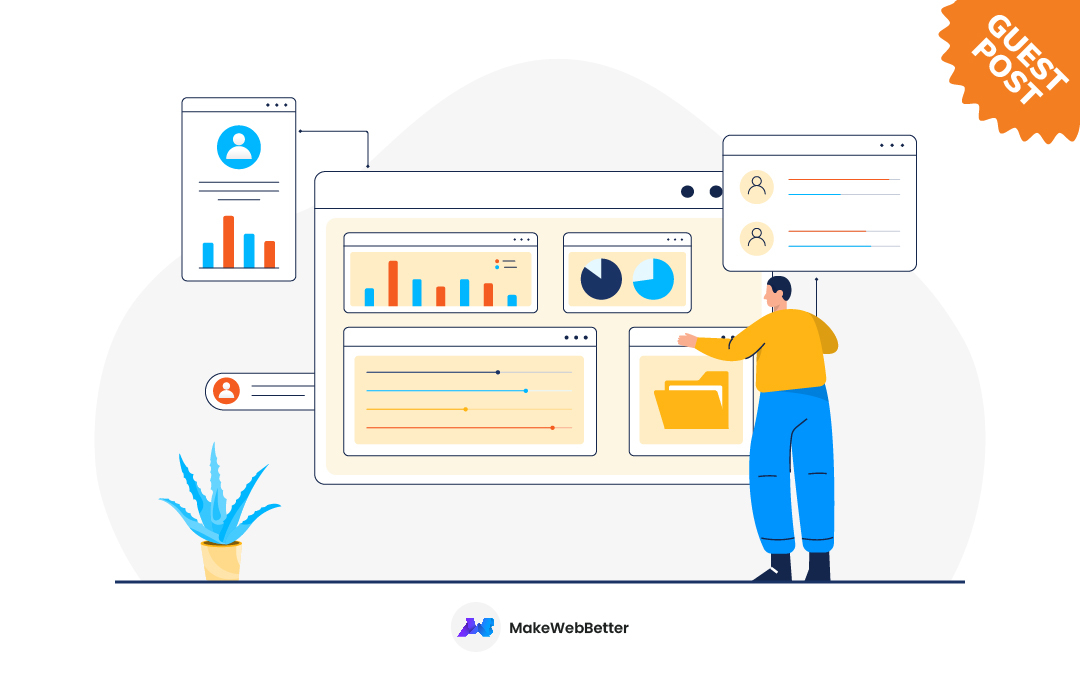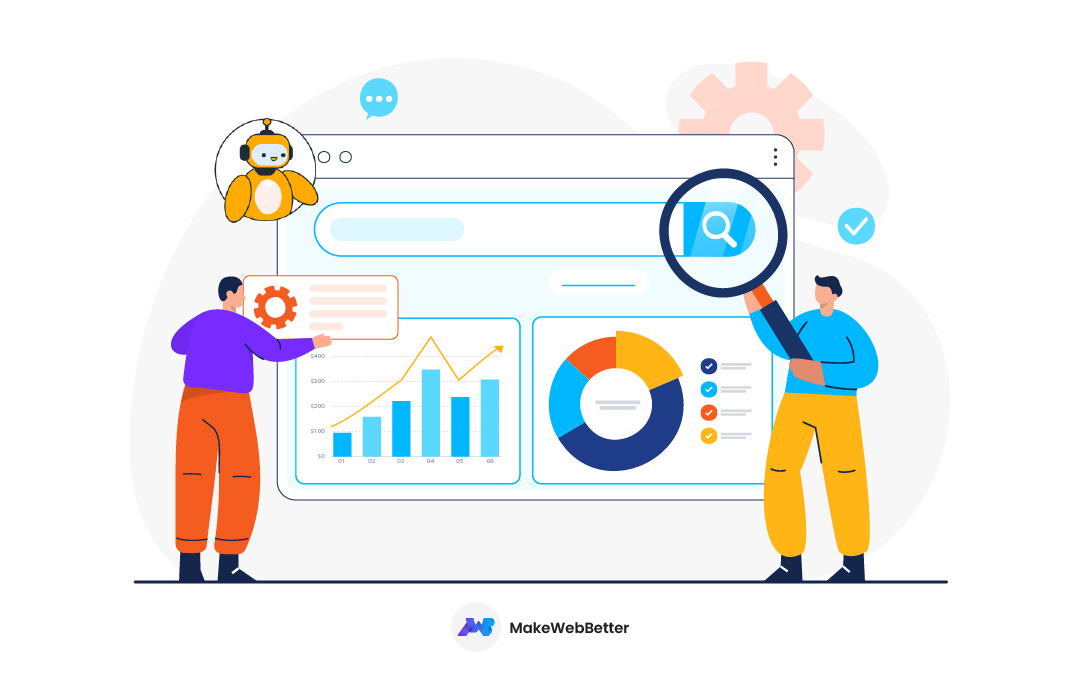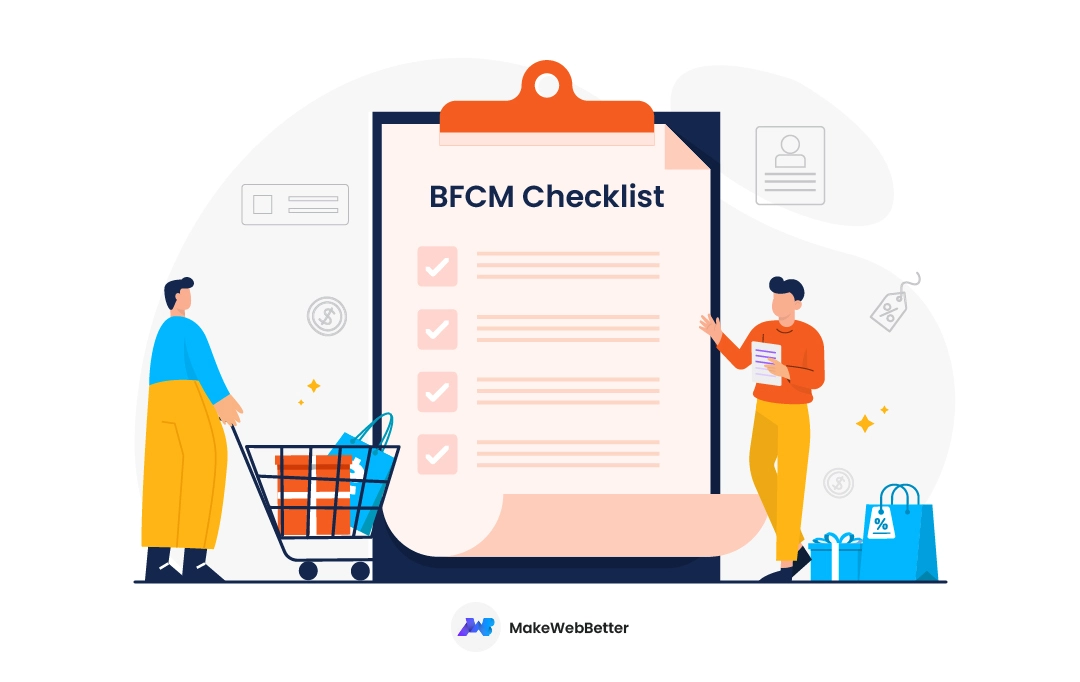Customer data collection is not just a simple process of building your database anymore…
Customers receive personalized digital services from almost every brand with which they interact. Unless you as a brand take active measures to improve the customer’s shopping experience, they’ll move over to your competitors—and the best way to know what measures to take is by collecting relevant data.
But you’re already collecting customer data, aren’t you?
Well, it’s not just the collection of the data that counts. It’s how you collect it.
Collecting customer information is increasingly sophisticated. Businesses and enterprises want access to customer data in real time and are willing to spend some serious money. In fact, IT spending is set to increase by 5.1% in 2022 in hopes of delivering delightful shopping experiences to customers.
As the retail industry becomes more data-driven, it’s up to eCommerce brands to improve their data collection process in ways that drive results. This article will show you how to do exactly that.
How to Collect Customer Data When Selling Online?
Choosing the best products to sell online isn’t an easy decision. You need enough information to make the right choice. And what better way to get this information than from your customers?
Here are some of the best ways to obtain customer data:
1. Transactional Data
These are records from the point-of-sale system on your website. The system collects a customer’s personal information, purchases, returns, and payments. You can see how frequently a product is purchased based on customer purchase orders and then stock up on your best-selling products.
2. Feedback Forms, Surveys, and Interviews
Add a form at the checkout stage to get demographic information from customers or have them rate their experience on a scale of 1-10. Send out digital surveys to understand how happy your customers are with their purchases, or reach out to them through an in-person or phone interview. One of the easiest and most modern ways is to integrate a multichannel contact center to reach your customers across different platforms with a single touchpoint.
3. Social Media Monitoring
Social media is a gold mine of information. Facebook, Instagram, TikTok, and Twitter provide reports and raw data about customers for business accounts, including quantitative data like the number of shares, follows likes, or click-throughs. Plus, you see everything your customers make public and how they interact with your brand informally.
4. Marketing Analytics
Marketing analytics follow the online activity of website visitors to determine whether your marketing strategies are working. Use popular marketing analytics tools like Google Analytics and KISSMetrics to see who’s responding to your ads, what time they visit your website, the device they use, and other information to guide your online marketing campaigns.
5. Subscription and Rewards Program
Inviting your customers to sign up for your email list is another valuable customer data collection source. It’s more likely to convert because it involves getting the customer’s permission. Based on this, you can assume the people who subscribe are already interested in your business.
Another great way to collect customer information is through reward programs. Your customers provide personal details like name, phone number, and email address, and in return, receive rewards.
Benefits of Customer Data Collection in eCommerce
For an eCommerce business, data collection forms the basis of your marketing and eCommerce SEO strategy and is integral to delivering a better customer experience.
Here are four reasons why you should collect your customers’ information:
- Better Understanding of your Customers: Better than relying on your gut feeling, data assesses who your customers are, why they shop, and what they expect from your brand. The more information you have about your customers, the more you can tweak your business processes to fit their needs and improve their experiences.
- Personalized Targeting: When it comes to customer care, eCommerce personalization is an important factor. 52% of consumers say they will switch brands if a business doesn’t customize their communication with them. Data collection helps you tailor your message and pitch products that suit each consumer’s preferences.
- Easy Identification of Areas of Improvement: Customer data helps you identify gaps in your business strategy. Suppose you launch a product and get negative feedback. This tells you you need to make changes to improve its appeal. Customer data also gives you clues on opportunities for product expansion.
- Enables the Prediction of Future Trends: Customer data can shape your brand’s future products and solutions. Are your customers buying bold colors over neutral clothing? Are videos becoming more popular in the consumer context? Make note of similar information from your data to keep abreast of what’s trending in your industry, and then make necessary adjustments.
What Types of Customer Data Collection does your eCommerce Business Need?
eCommerce data collection can quickly get overwhelming if you don’t know what kind of data you need. Different data types provide different insights depending on what you want for your business.
a) Persona Data
This refers to demographic data containing personal information, such as customers’ age, gender, ethnicity, socio-economic status, location, and behavioral interests. It provides a basic customer profile and what influences their choices and behaviors.
b) Quantitative Data
This is measurable information on how customers interact with your business. It includes transactional data like purchases and returns, social media activity, and customer service information.
c) Qualitative Data
This data focuses on your customer’s attitudes and opinions towards your business and their motivation for interacting with your brand. This information enables you to address customer satisfaction issues as they arise.
9 Ways to Improve eCommerce Customer Data Collection
We’ve talked about the kinds of data available and why you should collect your customer data. Next, let’s understand the best ways to improve your customer data collection.
1. Identify Data Sources and Key Metrics
Let’s start with gathering your data.
Each data source provides information for specific purposes. You may want to increase brand awareness, create relevant content, or improve your conversion rates. Focusing on just one particular data type may seem like it’s enough at first, but that may not always be the case.
Use data analytic tools to obtain relevant customer data insights accurately and quickly. When you know what data to collect, you’ll also understand the metrics to track. This will build a comprehensive customer picture and create the right strategy for your eCommerce personalization.
2. Segment your Customers
The next step is to place your customers in different categories or segments.
Group customer data according to your customer’s online behavior, preferences, interests, demographics, and so on. This segmentation will help you personalize product suggestions and offer product recommendations.
3. Win your Customers’ Trust
If your customers don’t trust you, they’ll hesitate to give you their information. It’s as simple as that. But how do you win your customers’ trust?
Be transparent about data collection and usage of data. Inform your customers they are being tracked and why. Cite reasons favorable to them, like an offer for relevant and personalized experiences. This puts your customers at ease and makes them willing to share personal information.
4. Ensure Data Privacy
The follow-up step to earning customers’ trust is ensuring the safety and privacy of the data in your hands. This is very important in eCommerce. Data breaches have become increasingly common, so a strong security system cannot be over-emphasized.
Let your customers know security measures have been implanted to protect their information. Put trust seals throughout your website and follow the GDPR guidelines on consumer data protection. Build a checkout process according to strict security protocols to guarantee safe data transfers from your customers’ credit cards.
5. Track your Customer Behavior
For an eCommerce website, it’s essential to know how your customers find the link to your site, what product pages they browse, what they add to their cart, and what they eventually buy.
Observing and tracking this behavior tells you what motivates your customers to shop from you. It also allows you to provide a better customer experience through personalized product suggestions and optimized web pages.
While you’re at it, observe the behavior of customers that didn’t make a purchase. How far did they scroll on the web page? What pages did they visit? How much time did they spend on the website? At what point did they leave? This will help you identify which website aspects are appealing to your visitors and what areas need improvement.
6. Have a Remarketing Strategy for Cart Abandonment
88% of online shoppers add items to their shopping baskets and leave without making a purchase. It’s why you need to come up with strategies to recover abandoned carts and effectively convert site visitors into shoppers, thereby boosting your store’s conversion metrics.
Use Google Analytics Enhanced eCommerce to collect customer checkout information and understand what drives them away. If there are multiple clicks on the checkout page with no complete transactions, maybe your checkout process is too complex. Or perhaps you don’t have multiple payment options. Identify the reason, and fix it.
7. Gather Customer Service Records
Your approach to customer service in the modern eCommerce environment is a key factor in determining whether a consumer purchases from your company or not. In fact, reports show that 51% of customer service teams already track customer feedback across different channels for this purpose.
Incoming customer queries should be gathered to note areas for improvement. If your customer service team receives the same questions multiple times, you can create a FAQ on your website instead of wasting time writing the same answers time and again.
8. Use the Right Analytical Tools
Customer data is often spread across multiple sources due to distributed marketing. It’s why automation is the most effective way to enhance and accelerate data collection. There’s a wide variety of analytical tools on the internet, so pick the ones that best suit your interest.
Some tools offer behavioral analytics tools that tell you critical information about your site visitors—how they got on your website, how long they spend there, and what they did there. With this data, you understand your customer’s browsing experience and identify areas to optimize. Additionally, you use customer survey tools to create quick questionnaires and feedback forms to collect data directly from your customers.
We highly recommend investing in a good CRM tool like HubSpot to centralize and manage your data in one place. Use it to organize data, create segmented lists, and keep track of all customer activities like purchase orders, live chat messages, email exchanges, and customer service requests.
9. Test, Measure, and Improve
The final step to improving your data collection process is constant monitoring and testing.
Data collection improvement isn’t a one-time endeavor—it’s a continuous process. Regularly check if you’re collecting and organizing data correctly. Then test different courses of action based on the information you get. Measure success to determine which changes have been effective and where improvements are necessary.
eCommerce Customer Data Collection: Wrapping Up
Customer data collection is the secret sauce to eCommerce innovation. It’s a learning curve that serious business owners need to (and should) undertake.
With technology at your fingertips, maximizing your ability to use your customers’ information to obtain the best results for your business has become significantly easier. As you improve your data collection efforts following the above strategies, prioritize making data-driven decisions with the flexibility of HubSpot and the trust of MakeWebBetter.
So what are you waiting for? Get in touch to create your path to eCommerce success with our team today.










